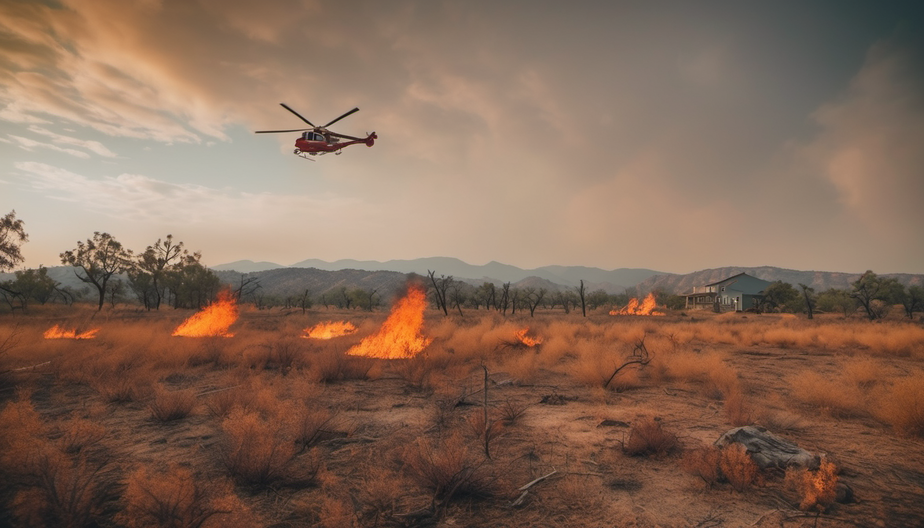

The fire danger period is a critical time for many regions, particularly those prone to bushfires. Understanding what this period entails, its implications, and how to prepare can make a significant difference in ensuring safety and minimizing damage. This article delves into the essential aspects of the fire danger period, providing valuable insights and practical advice.
What is the Fire Danger Period?
The fire danger period is a designated timeframe during which conditions are considered highly conducive to the outbreak and spread of fires. Typically declared by fire authorities, this period is influenced by various factors such as weather conditions, fuel load, and overall dryness of the environment.
Key Characteristics of the Fire Danger Period
- High Temperatures: Increased temperatures dry out vegetation, making it more flammable.
- Low Humidity: Dry air further desiccates plants and grasses, reducing moisture content and increasing fire risk.
- Wind Conditions: Strong winds can quickly spread fires and embers, increasing the potential for large-scale bushfires.
- Dry Vegetation: Prolonged dry spells and drought conditions contribute to an abundance of dry, combustible material.
Why is the Fire Danger Period Important?
Understanding the fire danger period is crucial for several reasons:
- Risk Awareness: Being aware of heightened fire risks helps individuals and communities stay vigilant and prepared.
- Regulatory Measures: Authorities often implement specific regulations and restrictions to prevent fire outbreaks during this period.
- Resource Allocation: Emergency services allocate resources and prepare for rapid response to potential fire incidents.
Preparing for the Fire Danger Period
Preparation is key to mitigating the risks associated with the fire danger period. Here are some essential steps to take:
Creating a Bushfire Survival Plan
A well-thought-out bushfire survival plan is vital. It should include:
- Evacuation Routes: Identify safe and multiple evacuation routes in case of a fire.
- Communication Plan: Ensure all family members know how to stay in touch and where to meet.
- Emergency Kit: Prepare a kit with essential items such as water, non-perishable food, first aid supplies, important documents, and medications.
Property Preparation
Making your property less susceptible to fire can significantly reduce risk:
- Clear Vegetation: Remove dry leaves, twigs, and other flammable materials from around your home.
- Maintain Gardens: Keep lawns short and gardens well-maintained to minimize fuel for fires.
- Create Defensible Space: Ensure there is a clear area around your home that can act as a barrier to slow the spread of fire.
Staying Informed
Staying informed about the current fire danger ratings and weather conditions is crucial:
- Monitor Alerts: Regularly check fire authority websites, local news, and weather updates.
- Fire Danger Ratings: Understand the different fire danger ratings and their implications.
- Community Programs: Participate in local community fire safety programs and meetings.
Restrictions and Regulations During the Fire Danger Period
During the fire danger period, authorities may impose specific restrictions to minimize the risk of fire:
- Burning Off Restrictions: Prohibitions on burning off garden waste or other materials.
- Campfire Bans: Restrictions on campfires and outdoor cooking to prevent accidental fires.
- Use of Machinery: Limitations on the use of machinery that could spark fires, such as chainsaws or mowers.
The Role of Controlled Burns
Controlled or prescribed burns are a critical tool in managing fire risk:
- Reducing Fuel Load: Controlled burns help reduce the amount of dry vegetation that can fuel large fires.
- Ecosystem Management: These burns can also help manage the health of ecosystems by promoting the growth of certain plant species.
- Training and Preparedness: Controlled burns provide valuable training opportunities for fire management personnel.
Community Involvement and Education
Community involvement and education play a pivotal role in enhancing fire safety:
- Fire-Ready Programs: Participate in local fire-ready programs to learn about fire prevention and response.
- Volunteering: Consider volunteering with local fire services to support community safety efforts.
- Educational Workshops: Attend workshops and training sessions to stay informed about best practices for fire safety.
Conclusion
The fire danger period is a time of heightened vigilance and preparedness. Understanding the factors that contribute to this period, implementing thorough preparation strategies, and adhering to regulations can significantly enhance safety and reduce the risk of devastating fires. By staying informed, prepared, and proactive, individuals and communities can better protect themselves, their properties, and their environments from the dangers of bushfires. https://www.firerescue.com.au/understanding-the-fire-danger-period-what-you-need-to-know/
Comments
Post a Comment